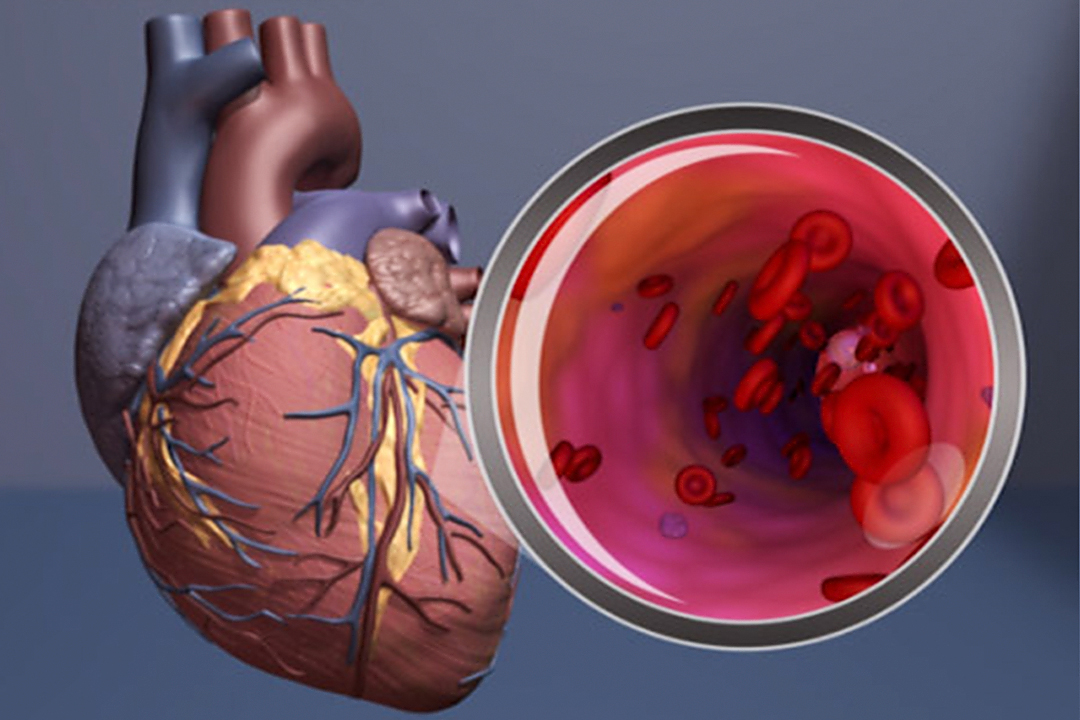By Ruth Steinhardt
February is a good time to listen to your heart: Not only does Valentine’s Day fall in this month, it is also American Heart Health Month, a designation created last year by President Barack Obama.
Cardiovascular disease, which includes heart disease, stroke and high blood pressure, is still the number one cause of death in the United States and the cause of about one in every three American deaths. Cardiologist Brian Choi, an associate professor of medicine and radiology and co-director of advanced cardiac imaging at the George Washington University, spoke to George Washington Today about healthy choices that can make a heartfelt difference.

Brian Choi, an associate professor of medicine and radiology and co-director of advanced cardiac imaging. (Photo courtesy Brian Choi.)
Q: What is the number one thing you wish people knew about cardiac health?
A: The positive thing to take away is that most of the contributors toward heart disease are within one’s own control. They’re behavioral. So you can control your own destiny when it comes to developing heart disease. Changes you make today can mean much better outcomes many decades down the road.
Q: What are the major contributors to cardiovascular disease?
A: Smoking is a huge contributor. There’s nothing more powerful in reducing the risk of a heart attack than quitting smoking. We’ve made enormous strides in reducing the amount of smoking in our population, but there’s still room to go. Because I’m a cardiologist, I usually see patients who have already had their first heart attack—and when I tell those people, “If you stop smoking, your risk of having another attack goes down by 50 percent,” it’s pretty effective then. But I’m not reaching patients before their first heart attack, which would obviously be even better.
Young people also are facing unique risks right now when it comes to smoking. E-cigarette use (“vaping”) has risen exponentially in the last few years, and we don’t know what the long-term effects of that will be. They are thought to be lower risk than traditional cigarettes, but they could be just as dangerous; we’re walking on unexplored territory. We may see a rebound in heart disease down the road.
A sedentary lifestyle is another contributor to cardiovascular disease—not exercising. Ideally, experts recommend 150 minutes of physical activity of at least moderate activity per week.
The thing people neglect the most is diet. Only 1 percent of Americans adhere to a diet that would be considered heart healthy by the American Heart Association. That’s the number one area as far as opportunities for improvement.
Q: So what constitutes a heart-healthy diet?
A: According to the AHA Healthy Diet Score, you need to achieve at least four of the following five criteria:
- At least 2 1/2 cups a day of fruits and vegetables;
- At least two 3 1/2-ounce servings of fish a week, ideally oily fish like tuna, mackerel or salmon;
- Less than 1500 milligrams a day of sodium;
- Less than 450 calories a week of sweets or sugars;
- At least three 1 ounce servings of whole grains a day.
If you ask people or observe what they eat, most of us really aren’t following these guidelines.
Q: Can you suggest some practical tips for people who want to improve their heart health?
A: Well, these kinds of things are lifestyle changes. I can’t write a prescription that will make patients instantaneously make those modifications. They have to be ingrained into one’s lifestyle. And this kind of behavioral change is very, very hard. It’s easy for me to recommend, but it’s very difficult to actually do.
But you don’t need to achieve all these metrics right away. Day by day, month by month, you can slowly make your lifestyle more heart healthy, so over time you start to achieve these goals.
The key is to make gradual changes that are compatible with your lifestyle. So, for example, if you take the Metro to work, get off a stop early and walk a little. You might be able to replace some of the time you spend going up and down in an elevator with taking the stairs. You can build in physical activity in the day to make it less burdensome than “Gosh, now I have to hit the gym.” If everyone had to go to the gym every day to hit these physical activity benchmarks, then it really would be an unachievable goal.
You also want to make these lifestyle changes fun. Try not to think of it as a chore. You can choose leisure activities that involve being physically active, and you can also incorporate physical activity into the things you already like doing. If you like watching Netflix, that’s great! You can do that same thing, but maybe on an exercise machine.
Think of it the same way when it comes to diet. When you start trying to incorporate those AHA criteria into your own diet, it can become a chore. So if instead you modify the guidelines into a diet that’s palatable and enjoyable, that’s a win-win. For example, a Mediterranean diet is very heart-healthy: it’s rich in nuts, olive oil, fruits and vegetables, with a minimal amount of processed and red meats. So weaving together healthy choices with things you enjoy is the most important thing.
Q: Are there resources available at GW for helping people make these changes?
A: Yes, definitely. For those who want to quit smoking, Smoke-Free GW, which is part of the Healthy GW initiative, offers resources like the Quit for Life Program, which is available to all students, faculty and staff as well as spouses. At the GW Medical Faculty Associates, we have registered dieticians, and we also recently hired a preventive medicine specialist Dr. Kaylan Baban, so she’s there to help people evaluate their goals and barriers, and provide education and counseling to support sustainable behavioral and lifestyle modifications tailored to their specific needs.


